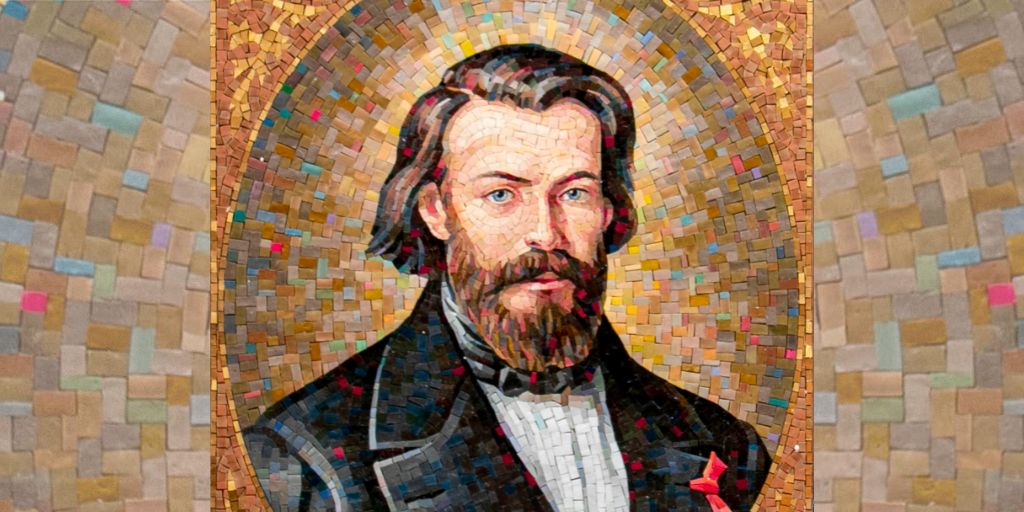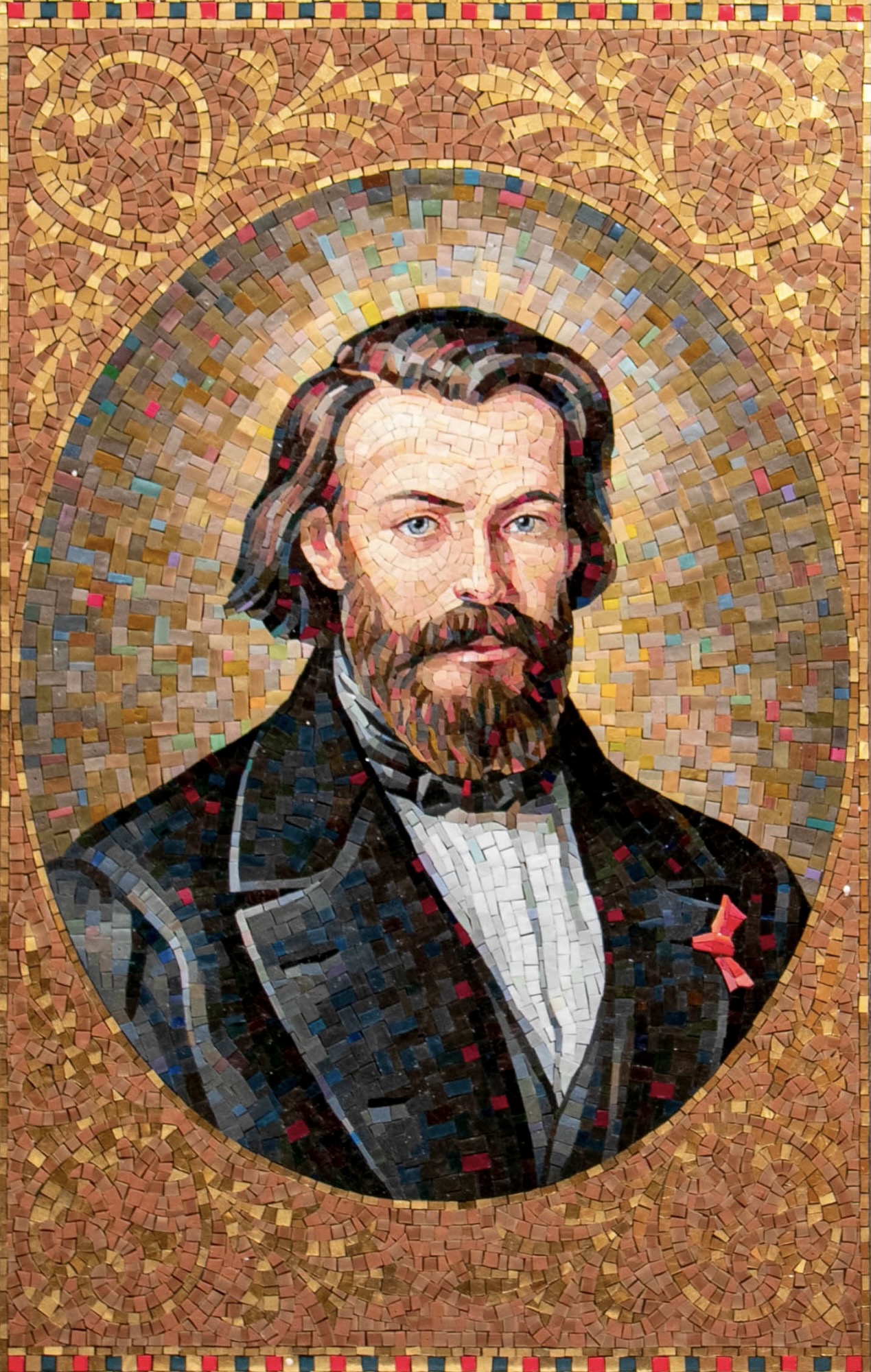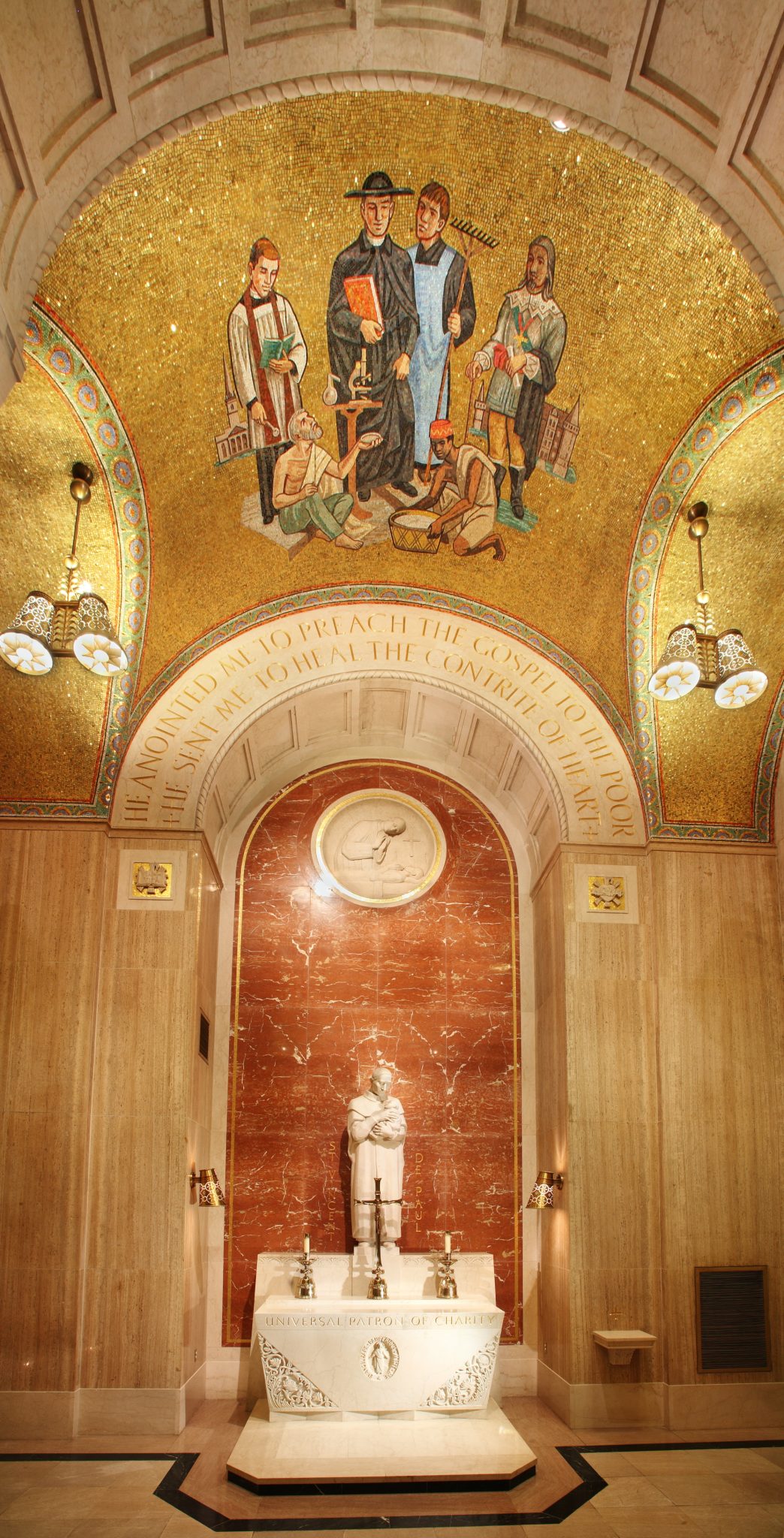
“Social welfare reform is to be learned… not in books nor from a public platform but in climbing the stairs to a poor man’s garret, sitting by his bedside, feeling the same cold that pierces him, sharing the secrets of his lonely heart and troubled mind.”
– Bl. Frédéric Ozanam
Did you know that the Society of St. Vincent de Paul was founded by a French law student?

As a young man, Frédéric Ozanam was passionate about defending the tenets of his faith. He revived a campus discussion club at his college and was outspoken in debates about Catholicism. But he came to realize that living out his faith needed to mean something tangibly, not just intellectually. So in 1833, he founded a charitable organization dedicated to serving the poor.
Today, Frédéric’s organization is known as the St. Vincent de Paul Society, and it serves over 30 million individuals in over 150 countries. As we celebrate the anniversary of Frédéric’s passing this week, we invite you to learn about his life, legacy, and where you can find him portrayed in the Basilica.
Frédéric’s Early Years
Born in Milan on April 23, 1813, Frédéric Ozanam was the fifth of 14 children born to a French doctor and his wife. When Frédéric was two years old, the couple decided to move back to France and raise their children in their hometown of Lyon. Highly intelligent and amiable, Frédéric grew into an inquisitive youth who read much of the philosophical literature of his era. But many of these works contained anti-Catholic ideas, leaving Frédéric with new questions that spurred him to find answers in prayer and Catholic writings. This time of doubt ultimately inspired him to dedicate himself to the defense of Catholicism, though he did not fully understand it.
Life At School
The next chapter of his life brought both encouragement and challenges. When Frédéric went to Lyons College, he found a spiritual mentor in the priest Father Noirot, who encouraged him and discussed his doubts. However, when Frédéric went to study law at the University of Sorbonne in 1831, he frequently encountered hostility towards his faith. Professors mocked Catholicism during their lectures, and the other Catholic students were too afraid to challenge them. But Ozanam boldly defended his faith, bringing an end to the unjust tirades. To further encourage open debate on campus on topics relating to faith and society, Frédéric helped revive a “defunct Catholic discussion club,” which garnered 60 permanent members within the first year alone.

Frédéric Founds the St. Vincent de Paul Society
It was during one of the club meetings that someone asked a question that would change Frédéric’s life: “What do you do besides talk to prove the faith you claim is in you?” Convicted that he had done nothing besides talk to further Catholicism, Frédéric concluded that he needed to serve others in a more tangible way. So, with the help of some friends, Frédéric formed a small charitable group to meet the needs of impoverished communities in Paris, encouraging them and providing items such as food, clothing, and firewood.
The group quickly grew and spread across the country. Within two years, a formal rule was established for the organization, and it was officially named the St. Vincent de Paul Society. The charity served all individuals whether they were Catholic or not, a position which was uncommon at that time.
Frédéric’s Career and Family Life
As Frédéric launched his career, he experienced both new beginnings and tragedies. Upon completing his law degree in 1836, he moved back home to Lyon and began working as a lawyer. However, in the next few years, both his father and mother passed away. Frédéric still continued his ministry work with the St. Vincent de Paul Society and also worked as a law professor at the University of Lyon, before getting married in June of 1841.
Frédéric always kept himself busy – whether with his professional, personal, or charitable pursuits. Shortly after his marriage, he went to teach literature classes at Sorbonne, where his enthusiasm soon won over the hearts of his students. During this time, Frédéric also began writing and publishing articles on a host of topics ranging from law to literature. However, his many commitments physically took a toll on him: in 1846, a year after welcoming his first child into the world, he nearly died from health complications. Following this episode, the administrators of Sorbonne sent him to Italy both for research and his health. He spent a year there with his family, visiting libraries for work and parishes to share about his charitable efforts with the St. Vincent de Paul Society, before returning to Paris.
Government Service and Final Years
Frédéric’s rest was short-lived; when political turmoil broke out in France in 1848, he joined the National Guard to defend his country against the rebels. It was partially due to his advice that Archbishop Affre agreed to approach the rebel army with the offer of a government pardon, an act which ultimately brought about an end to the war.
Even after the fighting was over, political instability still plagued the city of Paris, and thousands of men found themselves without work. The French government sought Frédéric’s assistance once more – this time, to solicit his Society’s support in distributing aid to the poor. Together with his fellow Vincentians, Frédéric did all he could for the lower classes, and even printed a newspaper entitled The New Era to champion their causes.
Unfortunately, Frédéric never wholly overcame his health problems, and his tendency to overwork likely exacerbated them. He grew so weary that in 1852, he quit teaching at Sorbonne and returned to Italy. Despite the temperate climate, his health worsened, and on September 8, 1852, he passed away while staying with relatives in Marseilles. It wasn’t until nearly 150 years later that he was beatified in 1997.
Frédéric Ozanam’s Legacy
At the time of Frédéric’s passing, the St. Vincent de Paul Society had grown to 15,000 members, with 2,000 centers located in 29 different countries. Today, the Society’s 800,000 members and 1,500,000 volunteers serve more than 30 million individuals in over 150 countries on a daily basis.
You can find Frédéric portrayed in a mosaic tile portrait in the St. Vincent de Paul Chapel at the National Shrine.
Sources:
“Antoine Frédéric Ozanam,” Britannica.
“Blessed Frédéric Ozanam,” Franciscan Media.
“For Your Love Alone,” Boniface Hanley, O.F.M., EWTN.


